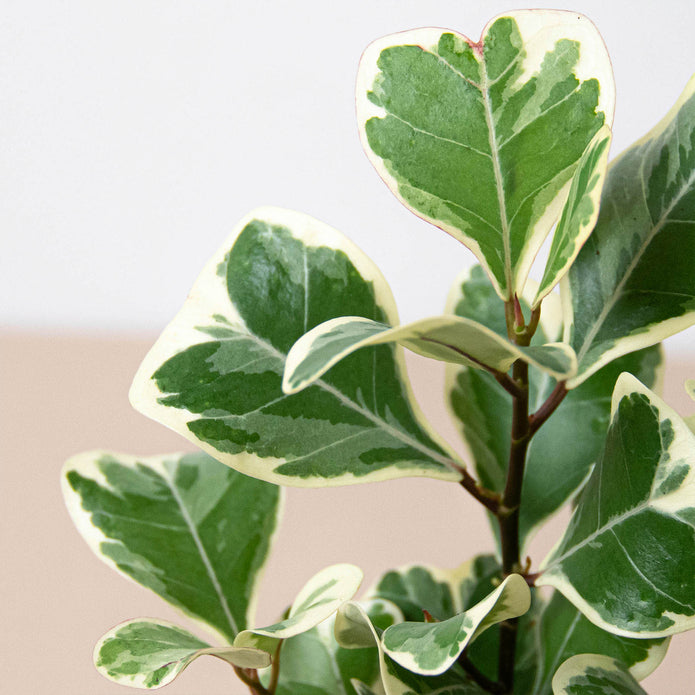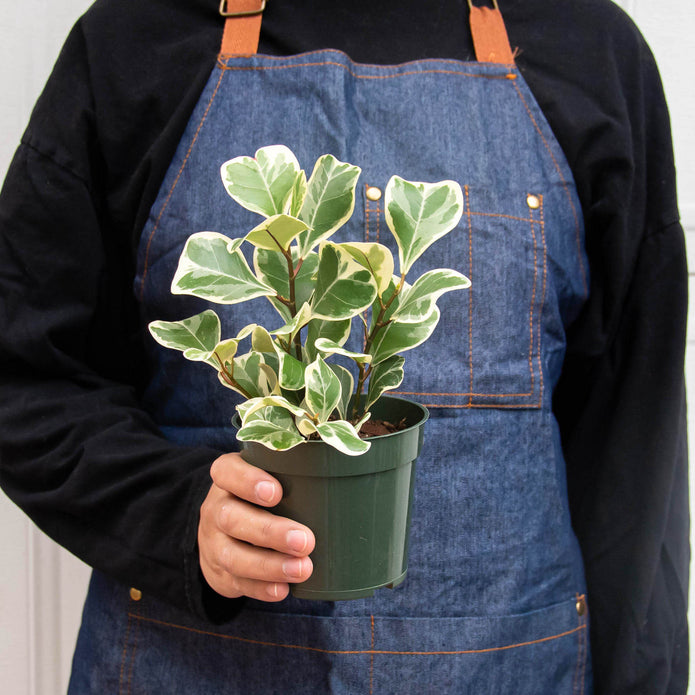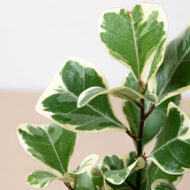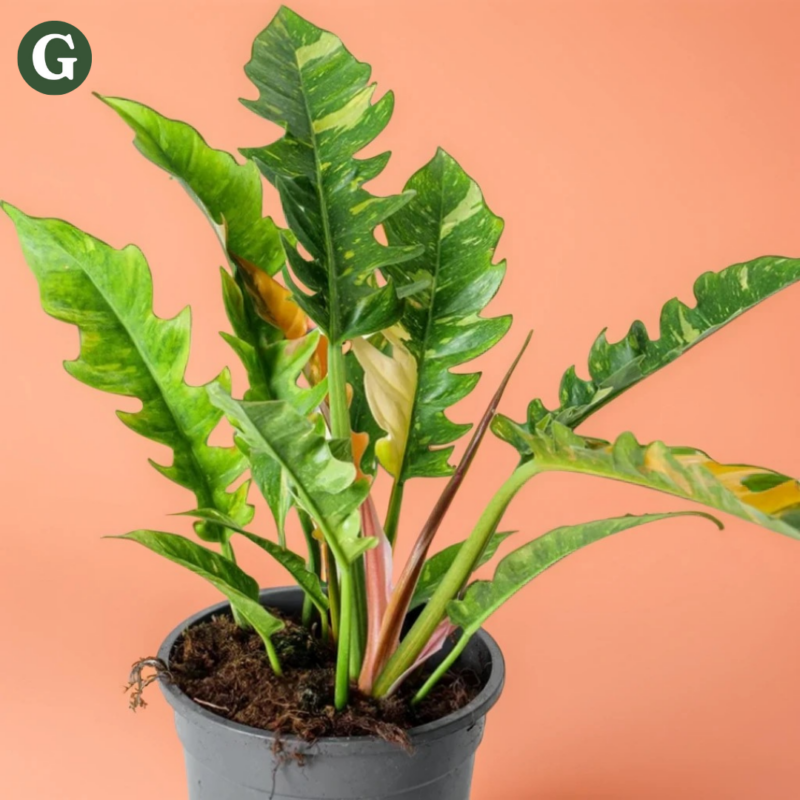Ficus Triangularis Variegated
Botanical Name: Ficus triangularis variegata
Common Name(s): Variegated Triangle Fig, Variegated Ficus
The Ficus triangularis variegata is a captivating and unique variety of the Ficus family, known for its striking variegated foliage and distinct triangular-shaped leaves. As a variegated form of Ficus triangularis, this plant features bright green leaves with creamy white or pale yellow edges, creating a stunning contrast that brightens any indoor space. The leaves' triangular shape and the variegation pattern make this plant a standout in any collection. Its upright growth habit and bold foliage make it a perfect accent plant for modern and minimalist interiors, as well as for those looking to add a bit of natural artistry to their home decor.
Native to the tropical regions of Africa, this Ficus thrives in warm, humid environments but adapts well to indoor living conditions, making it a favorite among houseplant enthusiasts. This plant typically reaches a height of about 3–6 feet (0.9–1.8 meters) indoors, t can eventually grow into a small tree, but it's often kept as a smaller, decorative plant by pruning. Its attractive leaves and slow-growing nature make it ideal for those looking for a low-maintenance yet visually appealing plant.
This variety of Ficus prefers bright, indirect light to maintain the vibrancy of its variegated leaves. While it can tolerate some lower light conditions, insufficient light can cause the variegation to fade, and new growth may be less pronounced. Direct sunlight should be avoided, as it can scorch the delicate leaves, leading to browning or fading of the variegated edges. Ideal temperature ranges for this plant are between 60-75°F (16-24°C), and it should be kept in a location that is free from cold drafts or sudden temperature changes.
To maintain the plant's health and appearance, regularly wiping down the glossy leaves with a damp cloth will help prevent dust buildup, ensuring efficient photosynthesis. Additionally, occasional pruning will help shape the plant and encourage more dense foliage.
Note: Like other varieties in the Ficus genus, the Ficus triangularis variegata can be toxic to pets, particularly cats and dogs, if ingested. The plant contains a milky sap that may cause irritation to the mouth, stomach, and digestive system. It is essential to keep this plant out of reach of curious pets and handle it with care.
Care Insights & Expert Tips
- Repotting: Repot every 1-2 years, or when the ficus becomes root-bound. Handle with care as the sap can irritate the skin.
- Slow Grower: This plant is a slow growing Ficus so be patient as it grows with optimal care and lighting.
- Prune regularly: Prune regularly to remove any dead or damaged leaves and leggy growth to encourage new growth.
- Fertilize once a month: Feed your plant with a balanced liquid fertilizer diluted to half strength once a month during the growing season.
- Avoid drafts: Keep your Ficus away from cold drafts and sudden temperature changes.

Visit our plant care library
Find essential tips to keep your plants thriving, vibrant, and healthy.

















